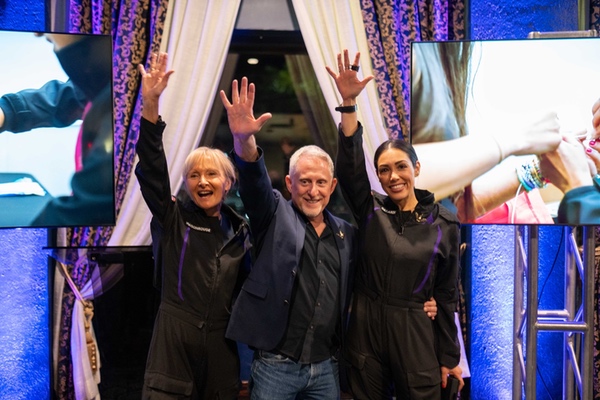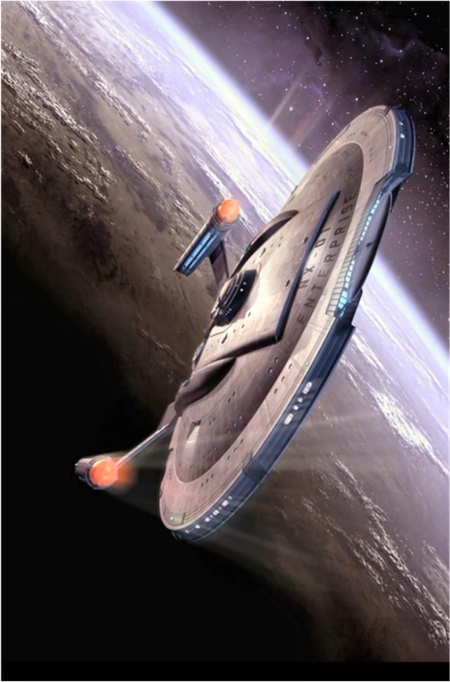
My suborbital life, part 10: Looking Up, WAY Upby Alan Stern
|
| What I experienced in my first spaceflight, on November 2, was a kaleidoscope of sensations, sights, and sounds that has led me to a bit of a surreal new life. |
In some ways, my spaceflight earlier this month on Virgin Galactic’s fifth commercial mission, Galactic 05, seems like a dream. And it was a dream in the sense that it was the fulfillment of a goal I’d long pursued. But it was also very real, both in its execution, and in inspiring me to rededicate my career to advancing spaceflight in new ways. The perseverance it took, spread over decades of effort and so many tries to fly in space before I actually did, completely paid off. Oftentimes along the way, I felt like I was wandering around in a desert, looking for a Promised Land. Fortunately, I reached that goal. And I plan to leverage that good fortune to undertake even bigger dreams, and I hope, to make some new, and important contributions to spaceflight.
What I experienced in my first spaceflight, on November 2, was a kaleidoscope of sensations, sights, and sounds that has led me to a bit of a surreal new life as one of the few (less than one in a hundred million) humans who have ever lived to have been to space, and only one of six, I believe, that have done that and also dived to the wreck of the Titanic.
I took a lot of risks on part to reach space. These were mostly in terms of sunk time, effort, and reputation from boyhood to today; but there were also the real risks of flying to space and back in the infancy of commercial human spaceflight, which is somewhat akin to the barnstorming era of aviation a century ago. But looking back, I am sure that the risks I took were worth the reward of the flight, and worth it many times over.
 Receiving Virgin Galactic astronaut wings with my fellow Galactic 05 first-time space flyers Ketty Maisonrouge and Kellie Gerardi, the evening after our flight, nicknamed “High 5.” (credit: Virgin Galactic) |
I learned a lot in making that flight. And from those lessons learned, I see now how to better use the new generation of commercial suborbital vehicles to advance research and education, how to better train for future spaceflights, how to better conduct future suborbital spaceflights, and how to pay forward my good fortune by passing along the many lessons learned to help others be successful in their spaceflights, whether they are as workers on their flights, like myself, or tourists.
I intend to fly in space many more times, and not just suborbitally, but also hopefully in Earth orbit, and maybe (just maybe) even beyond.
And I believe humankind’s “Star Trek” future will not only be achieved, but will ultimately be traced back to the 2020s when spaceflight became so much less rare than it had been.
Among the advances of the 2020s that make the pivot to a far-off Star Trek future so obvious are:
| I intend to fly in space many more times, and not just suborbitally, but also hopefully in Earth orbit, and maybe (just maybe) even beyond. |
I owe a great deal of thanks to many people and institutions that made my first spaceflight possible, including, my two amazing parents, many talented and inspiring teachers, astronauts at the dawn of the space age who were such strong role models to me, space scientists and engineers, NASA, my farsighted employer the Southwest Research Institute, my crew mates on Galactic 05, my space science colleagues, and the commercial spaceflight industry.
I intend to redouble my efforts contribute to the development of space, and to inspire children and adults alike to further accelerate the commercial spaceflight revolution and its shining promise of a better tomorrow.
 Star Trek: A Faith of the Heart (credit: Where My Heart Will Take Me). |
This blog is my tenth and final one in a series that I’ve written around my flying aboard the Galactic 05 space mission. Thank you for coming along on my first journey off the shoreline that is Earth’s surface and into the ocean of space that begins just 50 miles over all our heads.
I’ll close now with these brief excerpted lyrics from the Star Trek Enterprise theme song, “Faith of the Heart.” I hope this serves as an inspiration to all of you who dream of spaceflight:
I’m going where my heart will take me
I’ve got faith to believe
I can do anything
I’ve got strength of the soul
An’ no one’s gonna bend or break me
I can reach any star
I've got faith
Faith of the heart
Note: we are using a new commenting system, which may require you to create a new account.